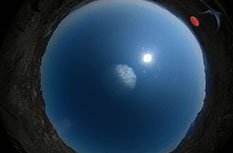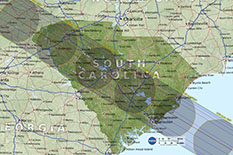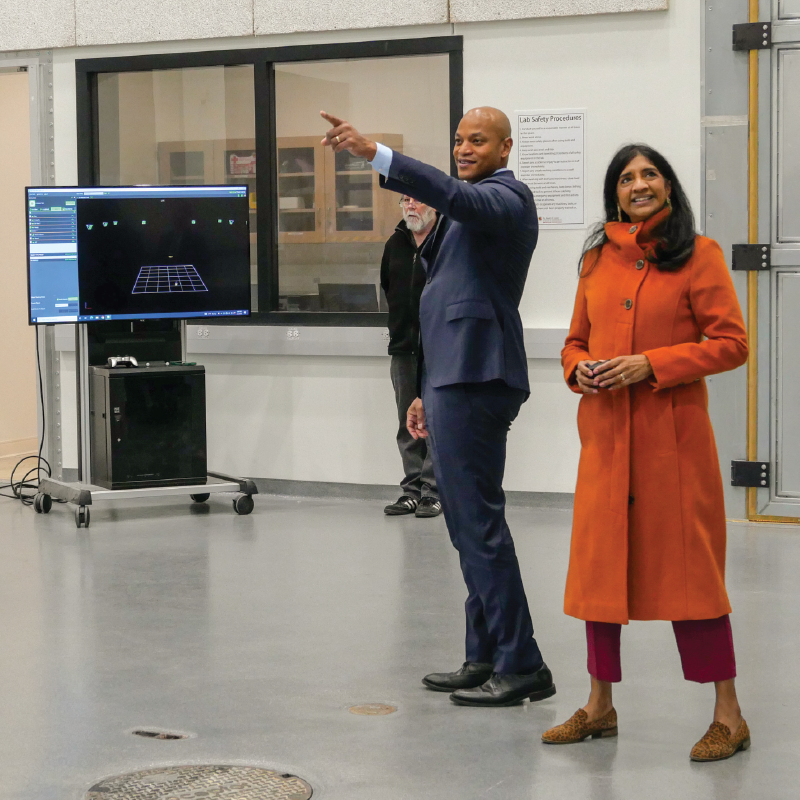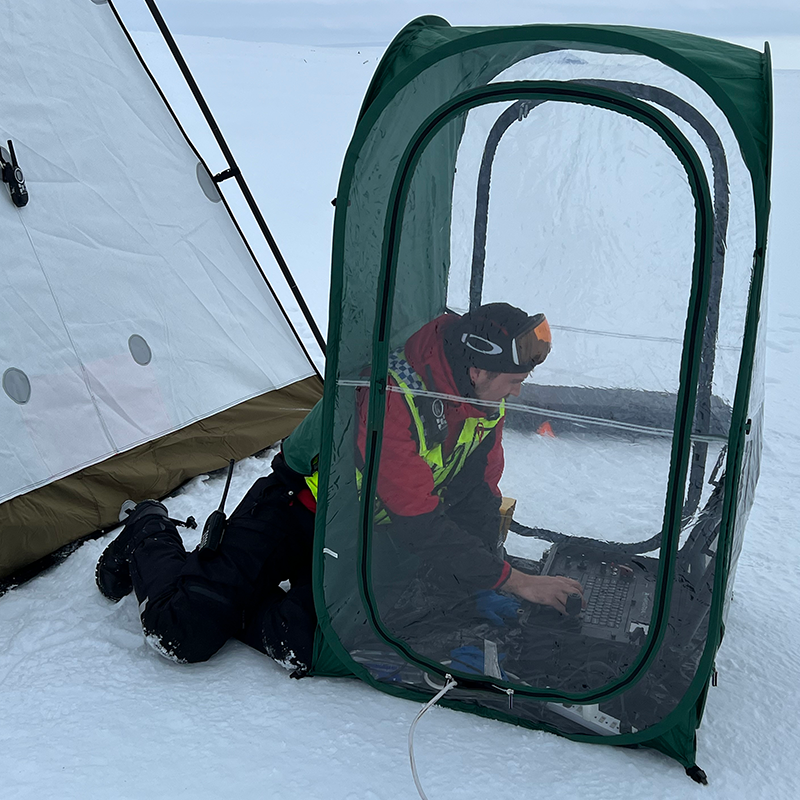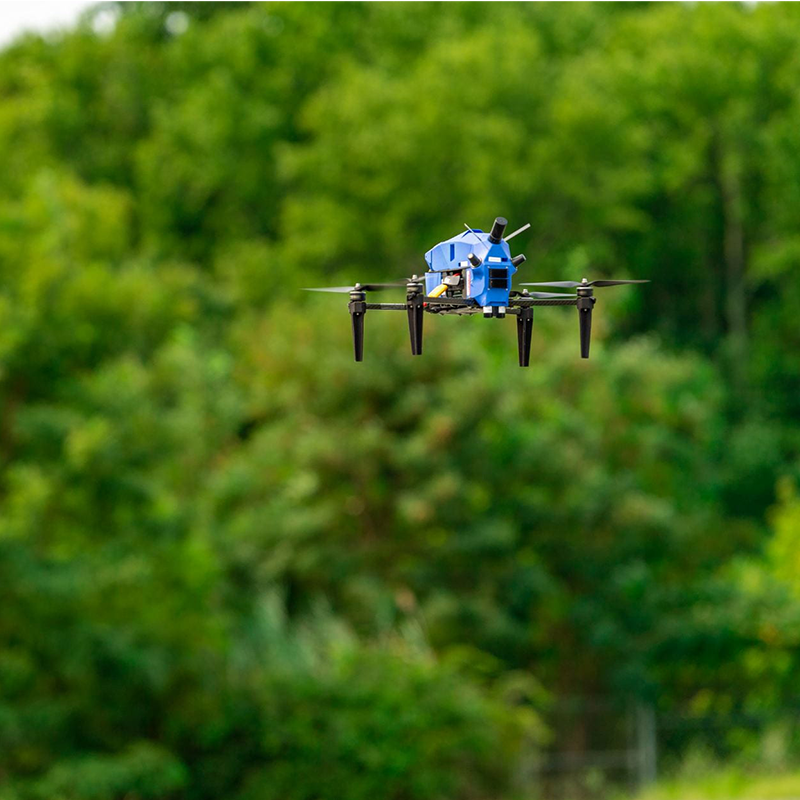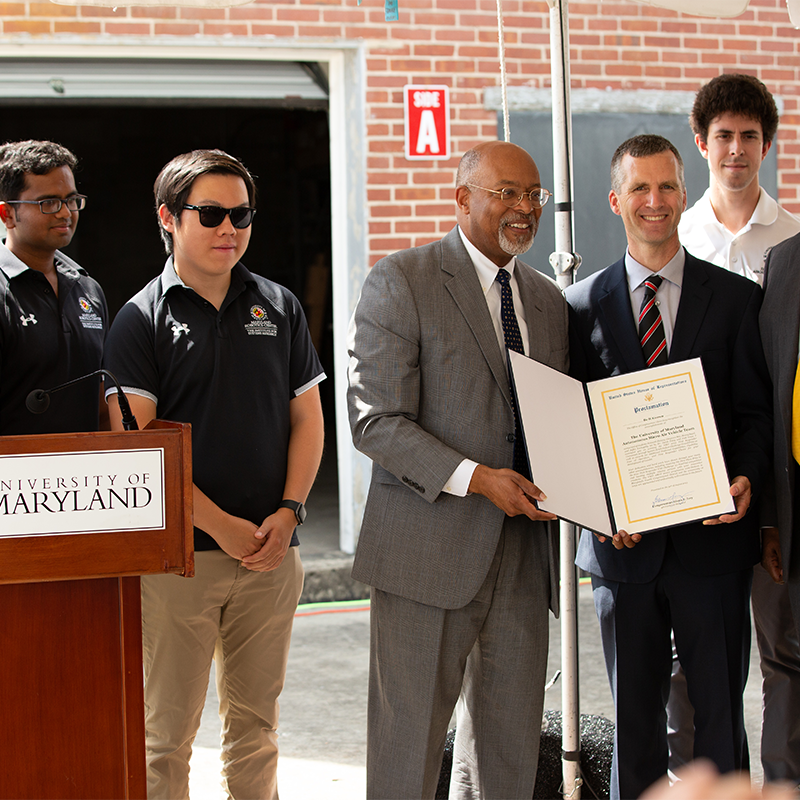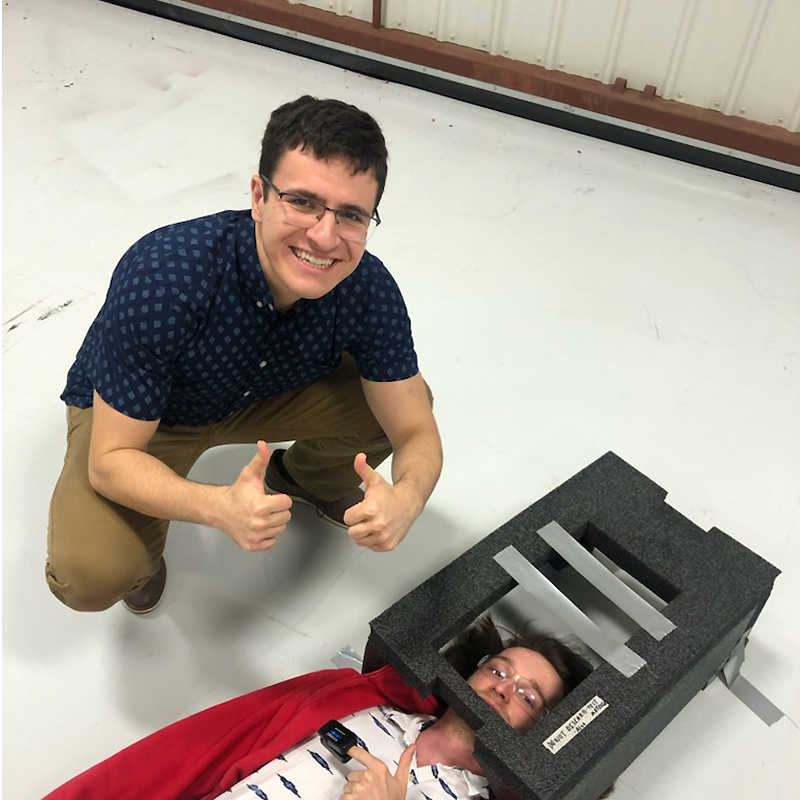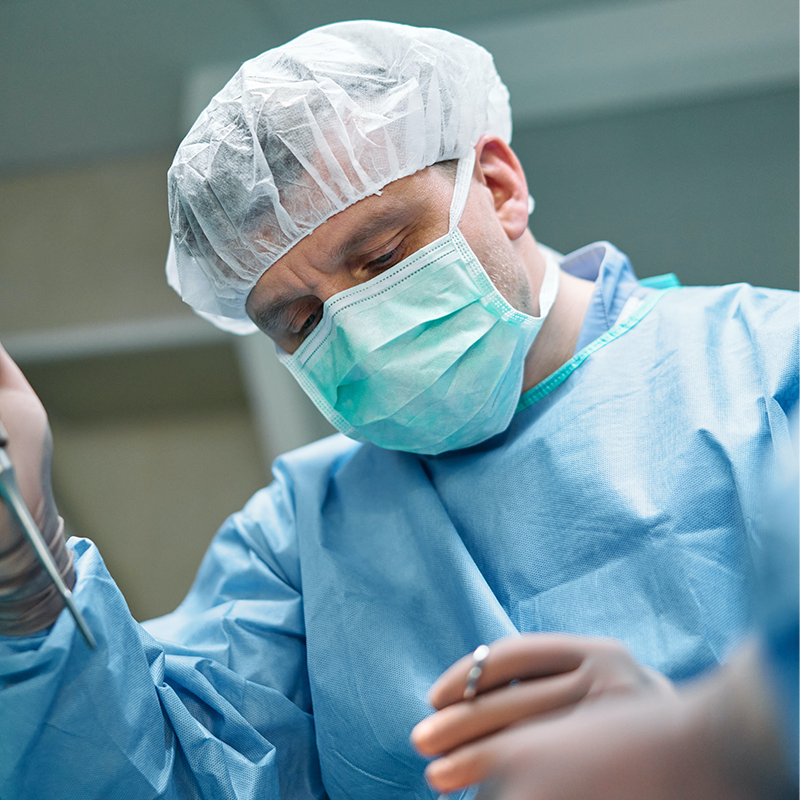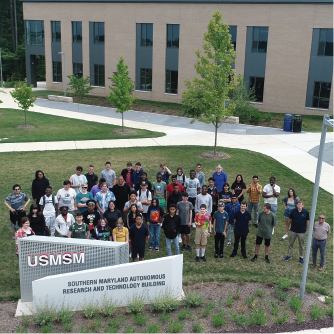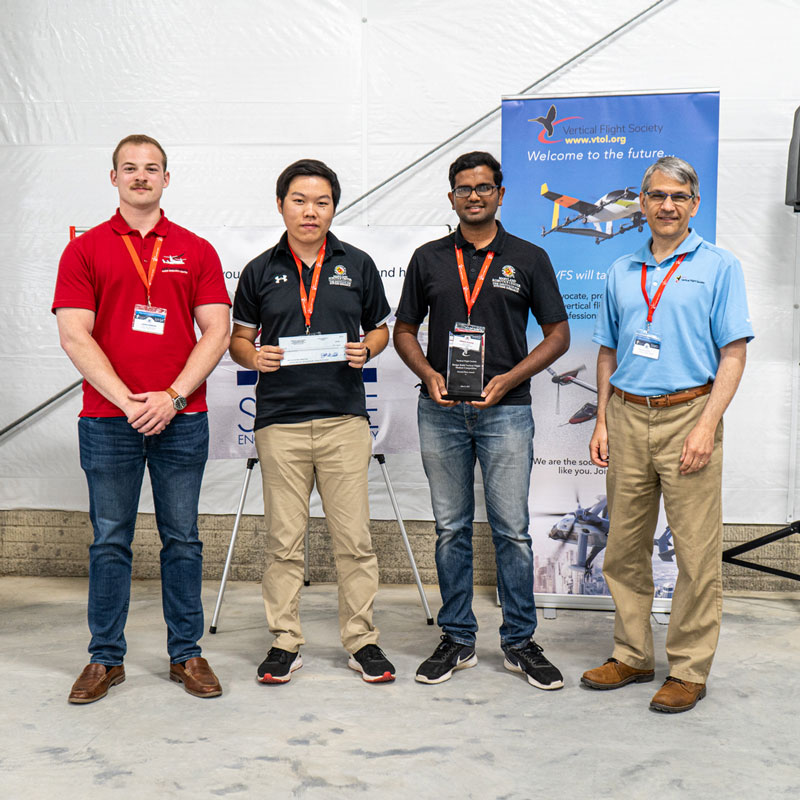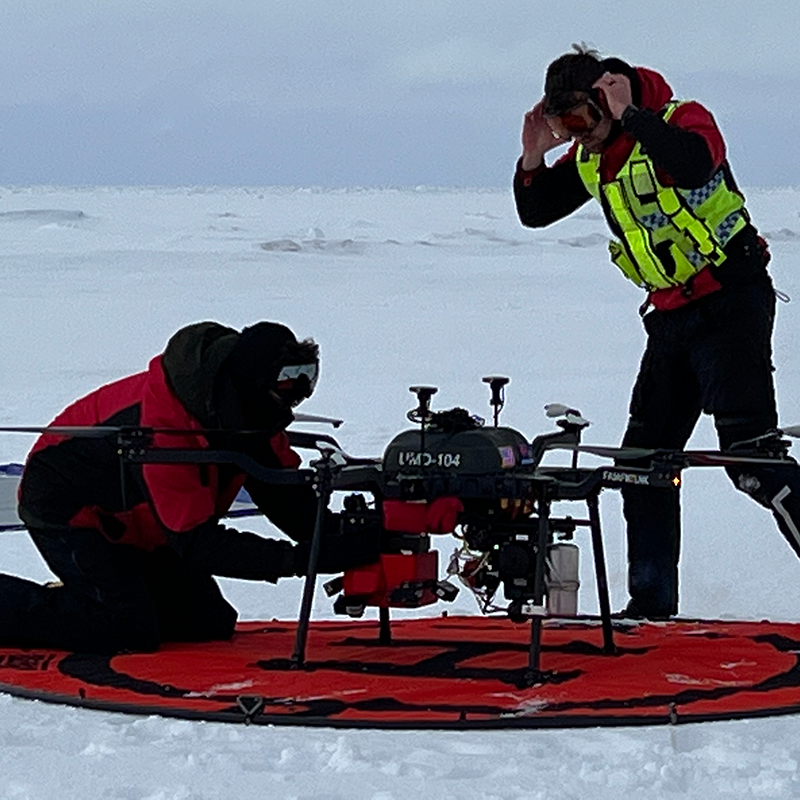News Story
UMD Researchers Conduct Field Tests to Evaluate the Atmosphere’s Effect on Lasers
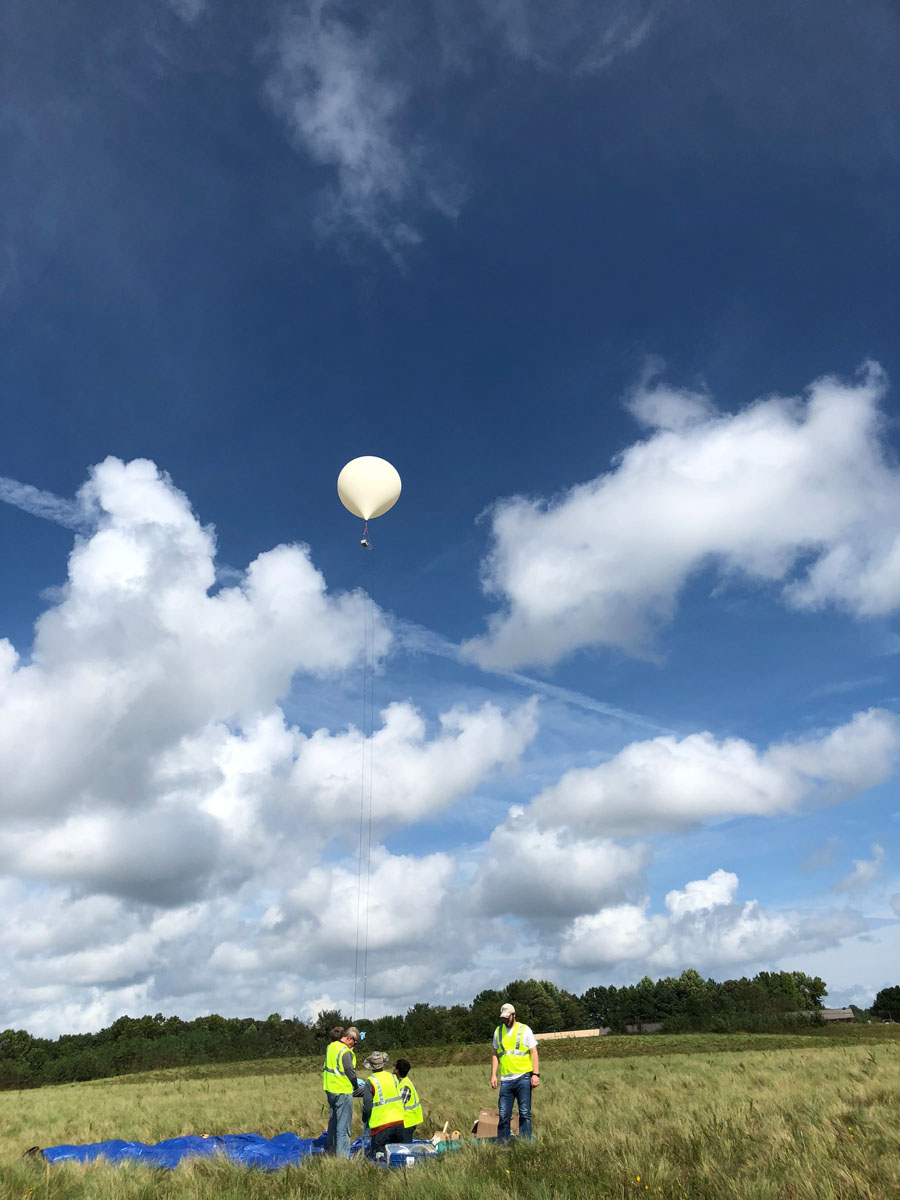
A University of Maryland Electrical and Computer Engineering research team led by Professor Christopher Davis and visiting research scientist Miranda Van Iersel recently conducted a number of experiments over the course of seven days at the UMD Unmanned Aircraft Systems (UAS) Test Site and at the Saint Mary's County Airport in California, Maryland, to determine the propagation of laser beams through the atmosphere.
When a laser beam (or other light ray) travels through the atmosphere, it becomes distorted by atmospheric effects like refraction, scintillation, and atmospheric turbulence (small-scale, irregular air motions varying in speed and direction). How much the beams are distorted depends on the atmospheric conditions at that time, such as temperature, humidity, pressure, wind speed, and direction.
Davis and Van Iersel, along with PhD student Daniel Paulson, assistant research scientist Chengsheng Wu, and research engineer John Rzasa, measured the amount of laser light that propagates through the atmosphere under a variety of weather conditions and atmospheric parameters using a multi-aperture laser transmissometer, resistance temperature detection (RTD)-probe systems, a weather balloon, and a weather station.
The team’s multi-aperture transmissometer consists of two parts: a laser transmitting the light and a 13-aperture receiver which measures the amount of light received after propagating over a certain path length and at a certain height. From the amount of received light the average turbulence over the path length can be calculated. The weather station was mounted on top of one of the racks used to hold the receiver and transmitter of the transmissometer.
4- and 8-probe RTD systems were set-up and placed next to the path of the laser beam and performed local measurements of temperature and turbulence, which are then compared with the measurements of the transmissometer.
The weather balloon was used to lift an 8-probe RTD system into the air, which is used to characterize the temperature in the first 50 meters or so near the ground. With the help of Michael Walker, Aerospace Engineering Alumnus, a tethered balloon was launched twice. The balloon reached a maximum height of 30 or 50 meters, and was brought down a few meters at a time to measure the temperature at a new height. The balloon was sometimes fluctuating in position and was not completely vertical due to the wind.
“Even when the balloon does not reach 50 meters, it is still important for us to measure the temperature profile since our laser beams propagate through the atmosphere at low altitudes,” says Van Iersel.
The project is funded under the Office of Naval Research Atmospheric Propagation Studies for High Energy Lasers program (ONR APSHEL), and the goal of the program is to improve the performance of directed energy systems for ship defense against a variety of asymmetric threats, as well as other military applications.
“The temperature and turbulence profile (with height) are known for higher altitudes, but unknown very close to the ground,” says Van Iersel. “These experiments help us to gain insight in these profiles and understand what is happening close to the ground. This is important for all kinds of applications such as optical communication and surveillance systems that use lasers or light going horizontally through the atmosphere up to a height of a few meters above the ground.”
The researchers faced various types of temperature, atmospheric pressure, wind, precipitation, and cloudiness during the experiment.
“When doing experiments in an uncontrolled environment you know that you'll never get perfect conditions,” says Van Iersel. “That makes it interesting and challenging as well as sometimes a bit frustrating. But in the end we want to know how our laser or light signals respond to the atmosphere under all kinds of conditions, so you do have to go out into the real world.”
The team has begun analyzing their data, and preliminary analyses show good measurements from the experiment.
As part of the APSHEL project, the researchers will travel to the Kennedy Space Center in Cape Canaveral, Florida next month to take similar measurements on the Shuttle Landing Facility to gain a better understanding of what happens to light in the atmosphere close to the ground.
Images and b-roll of the tests are available at https://go.umd.edu/LaserBeamTesting.
Published October 18, 2018
